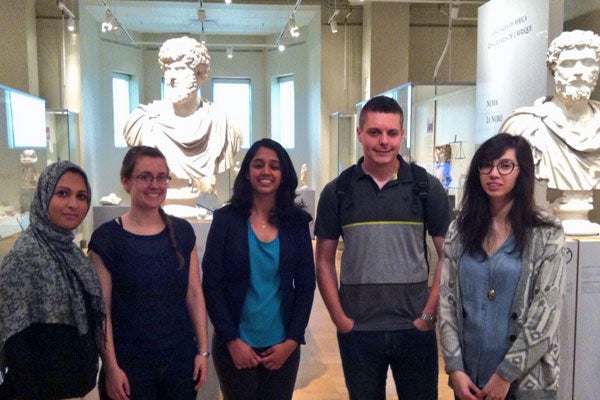
Royal Ontario Museum turns undergrad essays into videos
Published: November 28, 2014
From Roman urns to an Etruscan bronze mirror, they are museum artefacts that bring history to life.
As well as offering a glimpse of what life was like for people living in ancient Rome, they illustrate important economic, political and cultural events of the time.
“When I look at an Etruscan mirror I can’t help thinking of it as a mirror to the past,” says UTSC student Srivarsha Ponna. “To think of who may have looked into it thousands of years ago, it tells such a powerful story just by looking at it.”
Ponna, a student in Professor Katherine Blouin’s second-year History and Culture of the Roman World course, was one of five students whose essays based on specific artefacts were turned into video segments produced by the Royal Ontario Museum. Blouin’s inspiration for the assignment came from the BBC podcast A History of the World in 100 Objects where history is told through the lens of museum objects.
“I wanted to create a hands-on, relevant experience that my students may not get otherwise from a standard writing assignment,” says Blouin. “Allowing them to engage first-hand with objects available at the ROM is a unique way of getting them to think about history.”
The outline of Blouin’s assignment was straightforward; students were asked to pick an object from the ROM’s Ancient Rome collection and write an essay fashioned on the popular BBC series. The top five essays were re-worked into short video scripts.
Samantha Hnidec, a math and history major at UTSC, explored the imagery used in Roman coinage. Imperial Roman coins had not only images of the current ruler but also images of important buildings and symbols that served to promote aspects of Roman culture.
“They served as little pieces of propaganda that would be exchanged in all four corners of the Roman Empire,” she says. “Looking at an example of these coins really drives home how the Romans engaged in commerce and how they viewed themselves and their place in the world.”
It’s the third year Blouin has given the assignment but the first time the ROM has turned the essays into video segments. She’s noticed a level of enthusiasm for the assignment that translates into a quality finished product from her students.
Students are still expected to properly annotate their work and follow the same academic guidelines of a regular written assignment. The main benefit of the assignment, Blouin says, is in making history more accessible.
“It can be difficult to really delve into the social history of Rome through a survey course,” she says. “This is a dynamic way to get students thinking about the everyday objects used in Roman society and how in many ways they connect with today’s world.”
Don Campbell is a writer with the University of Toronto Scarborough.



